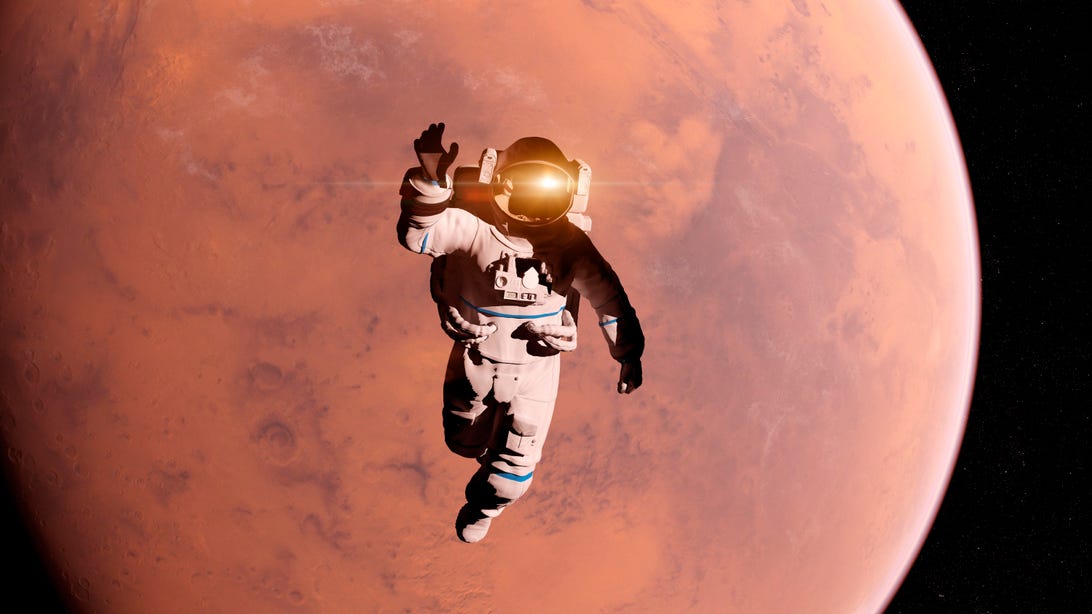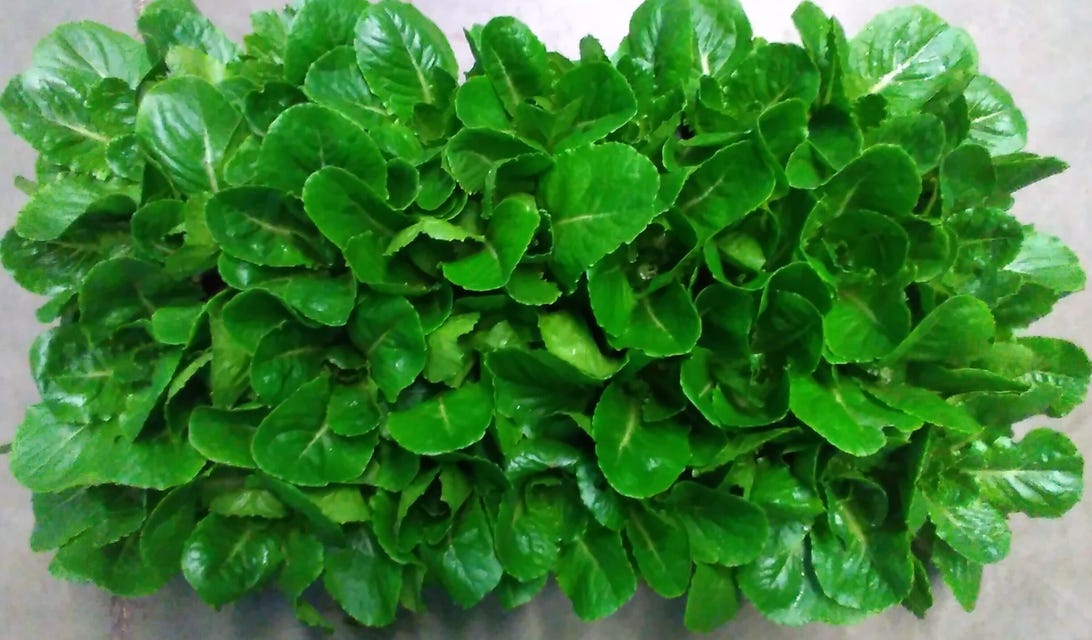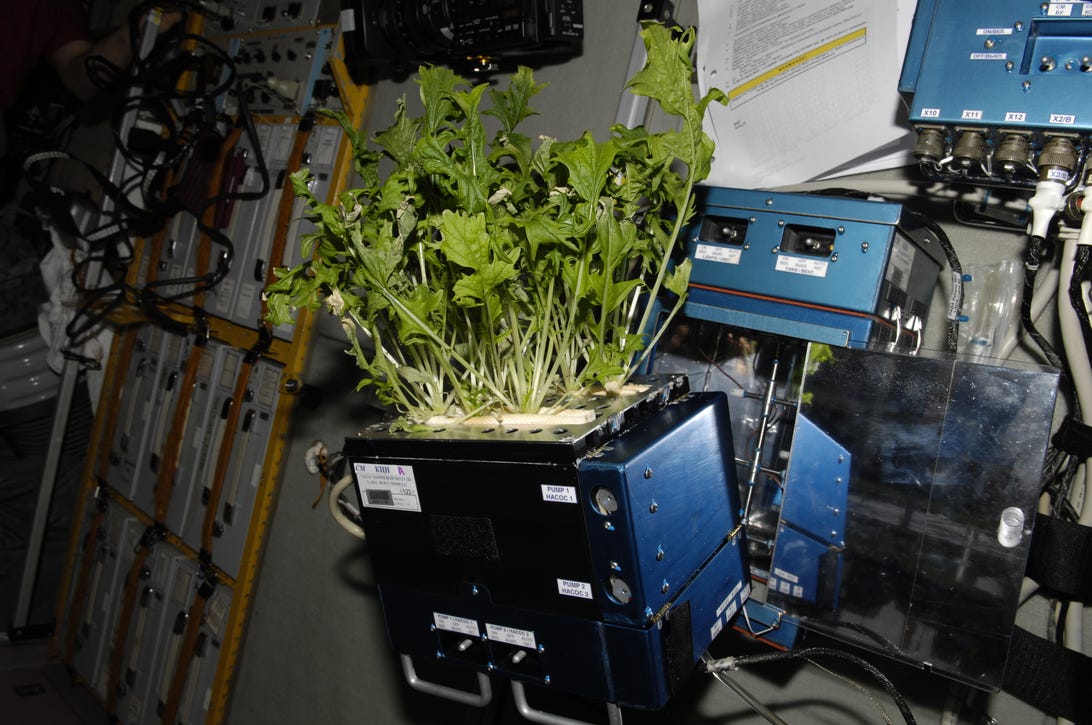

A special kind of lettuce could help anyone headed to Mars stay healthy.
Sciepro/Science Photo LibraryThe year 2030 might mark when humans finally take their first steps on Mars -- per NASA's timeline, that is. Elon Musk's recent estimate falls one year earlier, in 2029. But regardless of when it happens, we know one thing for certain.
Mars-bound astronauts will have a long journey through space ahead of them, subjected to microgravity for months. Those conditions will put the pioneers at risk of extensive bone loss. But there may be a tasty, crunchy and healthy solution.
On Tuesday, at the spring meeting of the American Chemical Society, scientists presented their blueprint for a new transgenic lettuce. It's similar to the salad ingredient we know and love, but genetically engineered to prevent bone loss -- and it can be grown right in outer space. Eating the plant would be like collecting a video game power-up that protects against the threats of microgravity.
"It's a very simple and cost-effective way to make a therapeutic," Karen McDonald, a chemist at the University of California, Davis and one of the researchers behind the plant, said in a Tuesday media briefing.

This lettuce produces a bone-stimulating hormone that could help mitigate bone loss in space and on Earth.
Kevin YatesOn Earth, our body maintains a balance between breaking down minerals in our bones and repairing things to make sure we're always getting the nutrients we need. In microgravity, though, this equation loses its harmony. Bone mineral breakdown still happens, but subsequent repairs can't keep up, which leads to loss of overall bone density.
To counteract such bone loss in space, astronauts often exercise on their spacecraft. The International Space Station, for instance, has a bicycle, treadmill and special weightlifting device. But in the new study, researchers note that there hasn't been enough evidence to support that exercise is sufficient to stave off bone density reduction.
That's why space explorers also carry syringes of medication that have what's called a human parathyroid hormone, or PTH, in the mix. Basically, PTH helps stimulate bone formation -- but this therapy has its own downsides. It requires you to take injections every single day, which isn't ideal. With the team's new lettuce concoction, on the other hand, each day "an astronaut would need to eat about eight cups of lettuce in order to get the proper dose," Kevin Yates, who's also a chemist at the University of California, Davis, said in the media briefing.

Astronaut Steven Hawley runs on a treadmill on the middeck of the space shuttle Columbia. The exercise is part of an experiment to evaluate the Treadmill Vibration Isolation System as planned hardware for the International Space Station.
NASA"We decided to use lettuce because lettuce is a plant that's been grown on the International Space Station," McDonald said. "It's also a plant that's very productive in terms of producing seeds, so our idea is that if we created a transgenic plant, one seed can generate thousands of seeds."
And unlike standard astronaut medication, the team's transgenic lettuce is synthetically engineered to have a gene that correlates with a slight variation of PTH. This variation is a combination of PTH and a protein known as -- prepare for a mouthful -- the fragment crystallizable domain of a human antibody. In many different ways, Fc helps PTH thrive in the human body.

Mizuna lettuce growing aboard the ISS before being harvested and frozen for return to Earth.
NASAOnce the team had their synthetic gene ready to go, they used a common gene encoding method to transfer it into the genome of regular lettuce, they explained, then grew lettuce plants from the seeds of the first lettuce, harvested seeds from those plants, and the story goes on. Plus, to make sure PTH-Fc successfully entered the plants, they can take out proteins from the growing lettuce and analyze them.
"I don't think we'll be able to do deep space exploration with a crew of humans without this sort of technology," Yates said. "It's not just the lettuce on its own, it's part of a broader way of thinking where we try to use every resource that we have available to us, whether it's on spacecraft or the moon or Mars."
And aside from space exploration, the researchers emphasize that their invention can be given to anyone predisposed to bone loss. "We need ways to produce therapeutics in a simple fashion, and also in a lower-cost manner, and I think the use of plants to make therapeutics, such as PTH-Fc, would be very valuable here on Earth," Yates said.
Before we get to that point, though, the team emphasizes that they must first conduct lots of other tests, such as animal studies, clinical trials, drug optimization and even seeing how the plant fares in a space-like environment. In fact, it hasn't yet been tasted by humans because of those clinical science hurdles.
Still, Yates says, "I hope that it is every bit as delicious as regular lettuce and that it will be a good break from powdered and dehydrated food that long-duration space travelers might otherwise be eating, most of the time."









 Add Category
Add Category